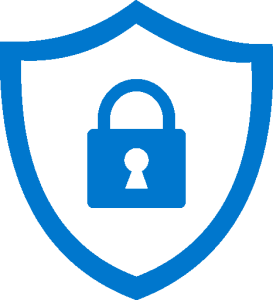 Security has become a major issue in the IT world. It seems like everyday you’re hearing about some new virus or exploit that’s sweeping the Internet. While it’s impossible to protect your environment from every threat, there are definitely steps you can take to limit your exposure. Three main areas of concern when it comes to Security is your Network, your Servers & your Desktops.
Security has become a major issue in the IT world. It seems like everyday you’re hearing about some new virus or exploit that’s sweeping the Internet. While it’s impossible to protect your environment from every threat, there are definitely steps you can take to limit your exposure. Three main areas of concern when it comes to Security is your Network, your Servers & your Desktops.
Network Security
Securing your network is the first step in protecting your environment and it all begins with the Firewall. A firewall, as its name implies, is a wall between you and the Internet. Leaving yourself exposed to the Internet without a firewall is a surefire way to get “hacked”. The good news is that most people have a firewall in place without even realizing it. That wireless router you bought or even that free modem you got from your ISP have built-in firewall capabilities. However, just having a firewall doesn’t mean you’re protected from the dangers of the internet. I’ll make sure your firewall is configured properly and up-to-date. If you’ve been living dangerously and don’t have a firewall in place, I’ll advise you on your options and implement the best solution for your company.
Another aspect of securing your network is your wireless network. Wireless networks, although extremely convenient, are an invitation to anyone within range to leech off your connection. If you leave your wireless open with no password, anyone can connect in and gain access to your environment as well as enjoy some free Internet. While password protection provides you with basic security, it’s just the start of securing your Wireless network. I’ll show you what you can do to restrict who’s allowed to connect to your network including two-factor authentication and separate wireless networks for business and personal traffic. If your Wireless infrastructure is lacking in security features, I’ll design a new one with all of the security options you want.

Server Security
Servers should be your next focus once you’ve got your network secured. They are a juicy target for those up to no good. Not only do they house sensitive company data, but they are often accessed by multiple users in your company. If a server is compromised, any user that accesses it is at risk. This is why protecting them should be a top priority. There are several things you can do to secure your servers, including running a local firewall, limiting who can access them, and running security software. As part of my assessment, I’ll advise you on how to lockdown your servers from intruders and run scans to make sure they haven’t been compromised. If you have a larger environment, have a look at the Systems Monitoring section to see how you can receive alerts from your servers.
Desktop Security
Your employees are the most important assets in your company, but when it comes to security, they can be your biggest threat. Now I don’t mean that your employees are plotting against you, I mean that a lot of companies get exploited through their employee’s computers. Companies often spend a lot of time and money securing their network and servers, but leave their desktops vulnerable to attack. It’s not because they are blind to the risk, but it’s due to the fact that having strict security policies can dramatically increase the burden on your IT department. For smaller companies, that IT department is usually one person or worse yet, just you. This is what makes protecting your desktops from attack a complicated issue. There’s a delicate balance between completely restricting what your employees can do, which can hinder their productivity and increase your support costs, and allowing them free rein which leaves you vulnerable. This is why I’ll work with you to understand your essential business processes and come up with a strategy that keeps your employees productive while mitigating risk. In the end you’ll have a plan that gives you the best of both worlds.
